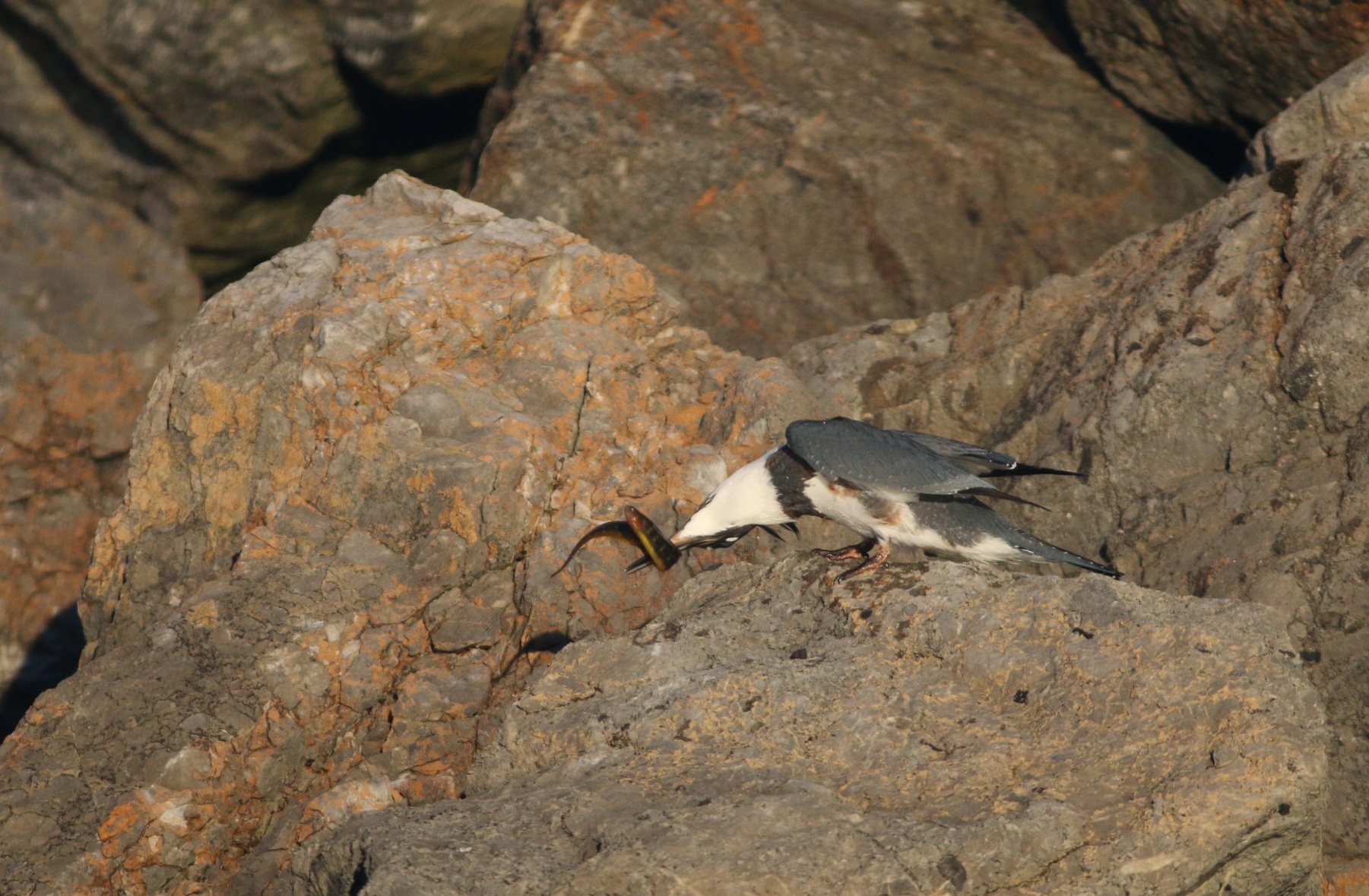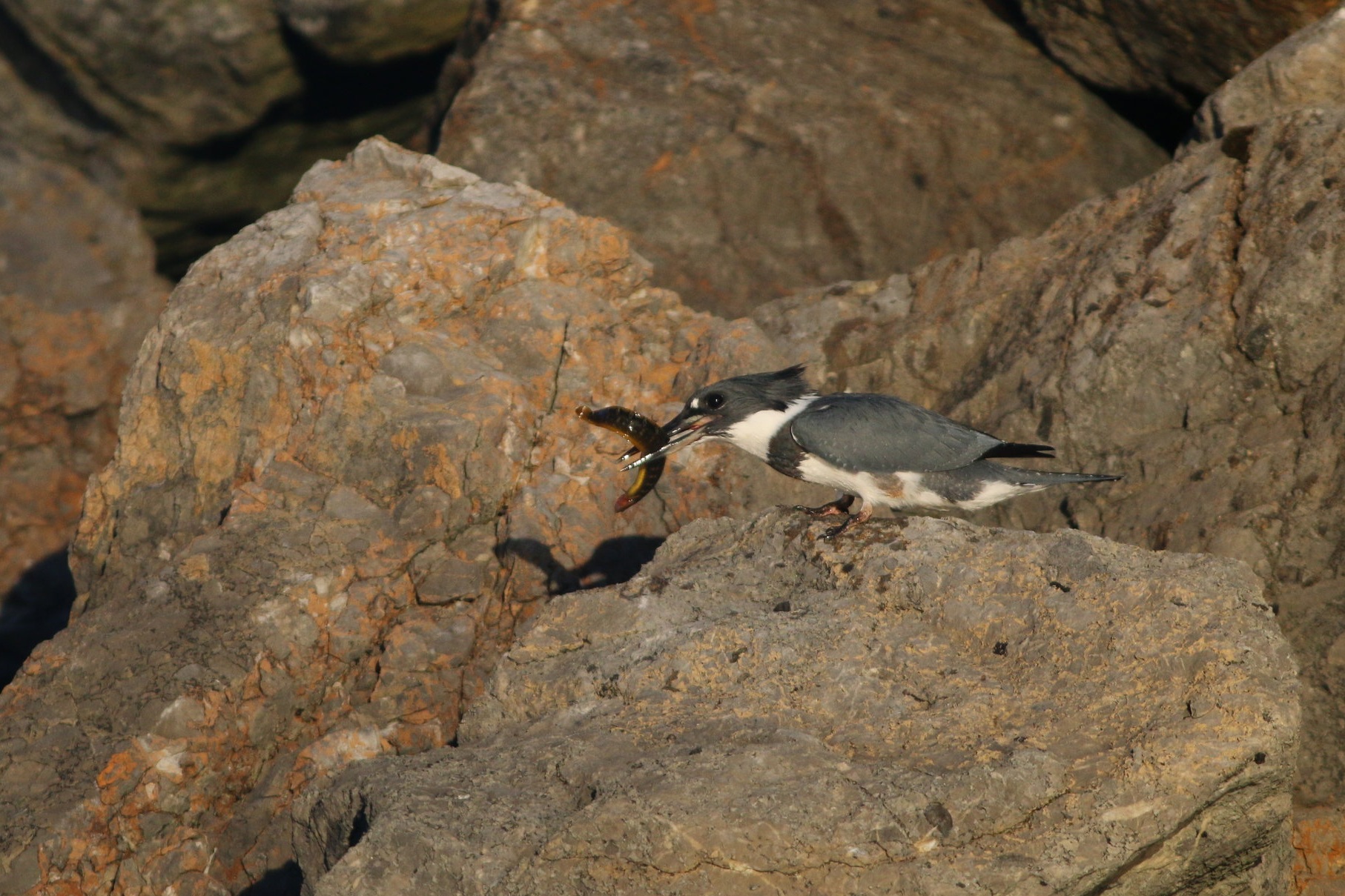The Belted Kingfisher sits atop a mast in Hoonah, AK, waiting for just the right moment to dive!
This week, I have the opportunity to give mini-presentations on local birds in for the fourth and fifth graders in Hoonah, Alaska. First up: the Belted Kingfisher!
The Belted Kingfisher (Megaceryle alcyon) is great. It’s everywhere. According to the range map on the Cornell Lab’s website, it can be found all over the continental United States. Talk about a friendly face!
Which is fair, because it is more or less the only kingfisher in the country, unless you spend any time in Texas. There, you can get the larger Ringed Kingfisher and stunning-green (and well named) Green Kingfisher.
Green Kingfisher in Cano Negro, Costa Rica. The range of these birds extends juuuuuuust into the United States through Texas! Notice that super-long beak.
Worldwide, there are 114 species of kingfishers that inhabit six continents (not so much Antartica). While they all have the same stocky shape, long, spear-like beak, and small feet for perching, there is certainly variation in size! African Dwarf Kingfishers are a tiny 4 inches in length. Giant Kingfishers, on the other hand, measure 22 inches long! Australia’s Laughing Kookuburra is the heaviest of the kingfishers, weighing in at 18 ounces. The Belted Kingfisher, by comparison, is 11-14 inches long, and weighs 5-6 ounces (think about the size of an American Robin).
Many kingfishers, including the Belted Kingfisher, build their nests out of tunnels in cavities in muddy banks. Occasionally, they will build their nests among Bank Swallows (Riparia riparia) since they require similar nesting conditions. Kingfishers are also unusual amongst birds because they can hover in place, an energy-demanding feat that few families of birds can accomplish.
With its wild crest, powerful bill, and showstopping dives, it is hard to imagine that the Belted Kingfisher would be a shy bird. But in my experience, this bird is a serious flight risk. It took me five years of birding to finally get a halfway decent picture of one. After photographing these birds across the country, an obliging Belted Kingfisher in Hoonah finally posed for me while devouring dinner.
The Fisher Queen, 2016. After no Belted Kingfishers would pose for a photo, I decided to take matters into my own and paint one into existence!
If watching Belted Kingfishers has taught me anything, it is the importance of patience- both in trying to photograph them, as well as in observing their behavior. They wait to dive until the perfect moment, conveying a sense of tenacity and mastery of their fishing skill. Humans across the world have often viewed the kingfisher as a symbol of patience, peace, and prosperity. My experience with the Belted Kingfishers of Hoonah would cause me to add that kingfishers are smart. I was told by a local that "the kingfishers follow the bears.” Grizzly Bears are everywhere in Hoonah during the spring, summer, and fall. When I think about it, that makes such perfect sense. Why not follow an animal that will find the best fishing spots for you, and then leave its scraps behind?
I am really lucky in that the students listening to my presentations are teaching me in return. I am learning the Tlingit names for the local birds. The Belted Kingfisher is “Tlaxaneis’” (Cluck-a-nase) in Tlingit.
Coming up next, a gander at geese!





